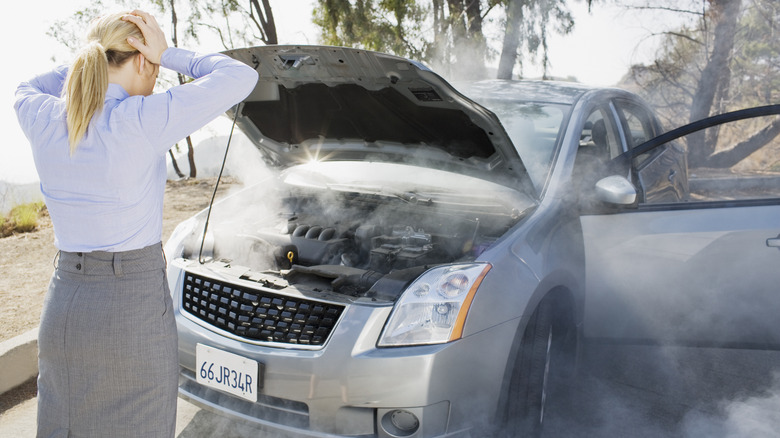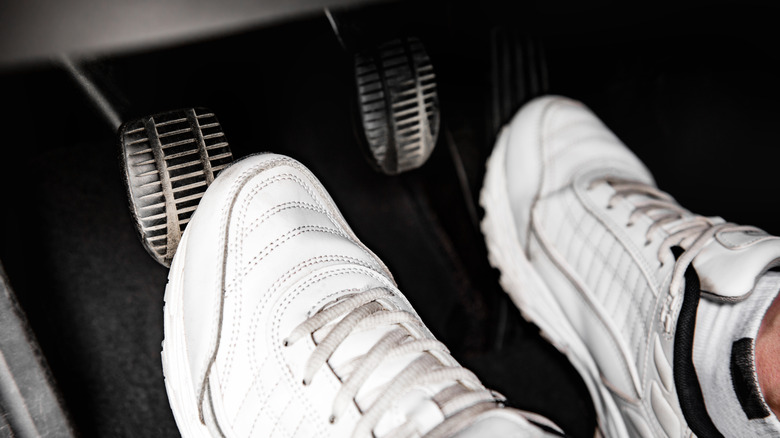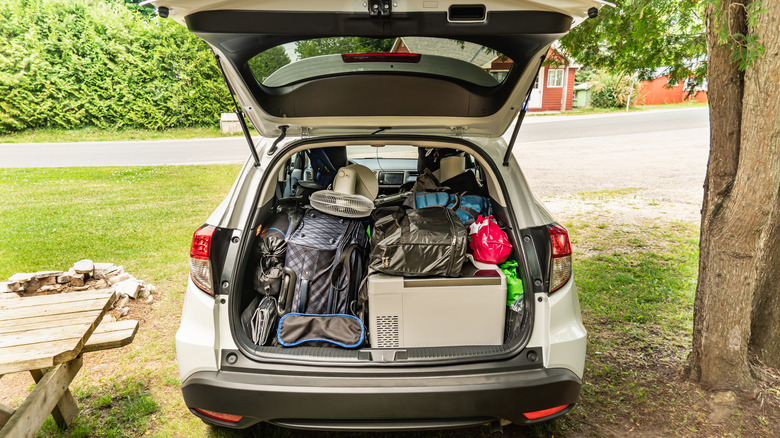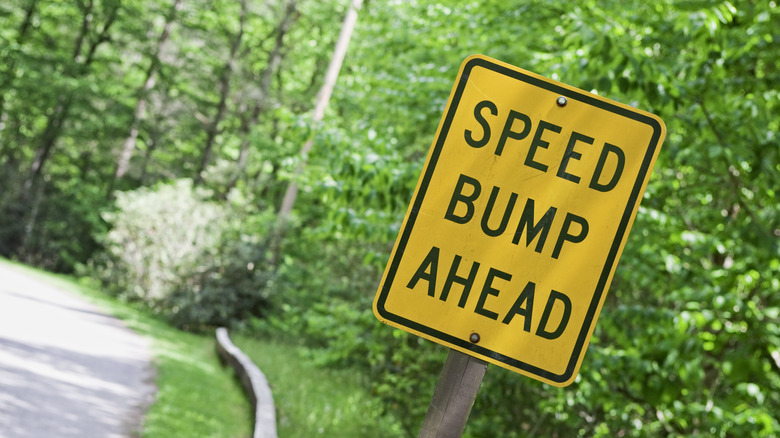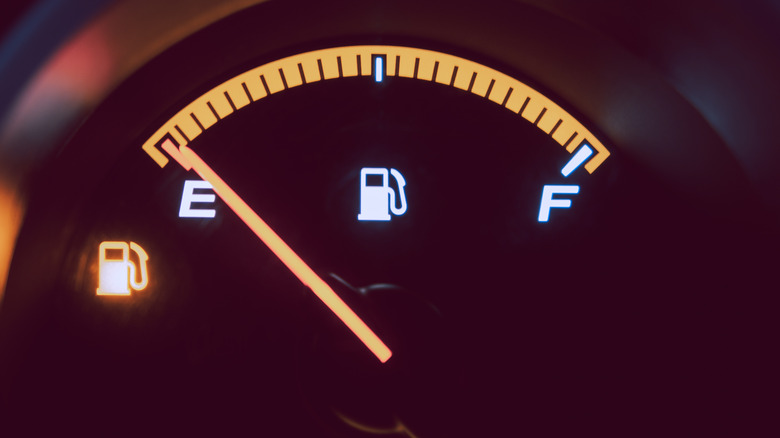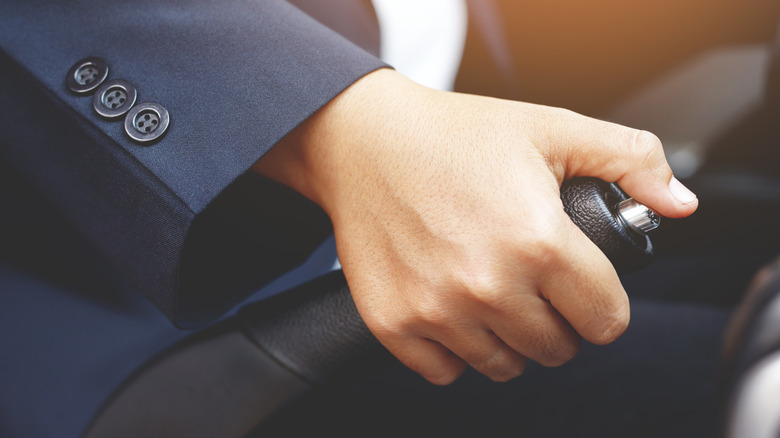5 Common Driving Habits That Might Be Damaging Your Car
Once you've successfully gotten your driver's license and started driving on your own, you tend to settle into a handful of habits. Maybe they were taught to you by your instructor or parents, or maybe they just seemed the most sensible when you started doing them. Like riding a bike, driving a car is a process heavily reliant on habits and instincts, so this isn't unusual. Unfortunately, it's the very fact that these habits aren't unusual that makes some of them somewhat concerning.
For one reason or another, a large number of drivers in the world tend to pick up some bad habits over the course of their driving lives, whether due to some half-baked myths received from a third party or because the proper ways of doing things seemed too stringent. These habits may seem innocuous at the moment, but as you engage in them, you're steadily dealing damage to your car without even realizing it.
Riding your brakes
If you're a very cautious driver, you may keep your left foot on the brake pedal instead of on the footrest so that you can slam on it at a moment's notice. The primary purpose of your brakes is, of course, to slow and stop your car, but that doesn't mean they should be engaged all the time, especially not while the engine is being revved.
Riding the brake pedal, even slightly, puts unnecessary wear and tear on the brake pads and rotors or drums. The brake and gas pedals are not supposed to be engaged at the same time –- pressing the brakes down while the rotors are spinning full-on causes the brakes to overheat, which in turn reduces their stopping power. If you keep doing this, eventually, you'll actually increase the likelihood that your brakes will suddenly fail on you while you're on the road. This can lead to more frequent stops at the mechanic shop or potentially a car accident.
Overloading
When you've got a big car with a big trunk, you may be tempted to use that trunk as a sort of living storage unit, cramming a bunch of random junk into it like clothes, sporting equipment, camping gear, and other miscellanies you either can't or don't feel like storing in your home. While the primary purpose of your trunk is to haul things, though, it's not meant to haul an entire shed's worth of stuff 24/7.
Every car has a specific limit to how much additional weight it can carry, whether in the trunk or the rear seats. If you exceed that limit by weighing your car down with junk, it can begin to affect your car's functions. For one thing, the extra weight requires more horsepower to haul, which means your car burns through its fuel storage faster to compensate — as a result, decreased fuel mileage. The heavier weight from the top also puts extra strain on the car's tires, suspension, and transmission, increasing the likelihood of mechanical failure.
Hitting speed bumps full-on
The point of speed bumps in residential areas is to gently dissuade local drivers from screaming down a small road at full tilt, potentially endangering pedestrians. Some drivers view speed bumps as more of a suggestion than a rule and opt instead to hit them at full speed. Even putting aside the risk of vehicular collisions on a residential street, doing this is terrible for your car's suspension.
While the occasional accidental speed bump hit isn't a big deal, repeatedly hitting speed bumps at full speed puts a constant strain on your car's shock absorption system. Normal cars aren't meant to bounce off the road like that, so a sudden heavy impact, both from hitting the bump and landing back on the ground, can cause your shocks to warp or leak. This, in turn, can lead to damage to your steering and exhaust systems as the car starts to bottom out. Incidentally, these same problems can arise if you hit potholes at full speed, so refrain from doing that also.
Leaving the fuel tank near empty
We get it; gas is expensive. If there are two financial constants in life, they are taxes and high gas prices. If you can't afford to refuel your car when the low fuel warning comes on, you may be tempted to keep on driving until the tank is completely tapped. This, however, is inadvisable, and not just because you may end up in the middle of the highway with no fuel.
Your car's fuel intake system relies on a certain fuel level to maintain pressure. When little to no fuel is left in the tank, your intake has much more difficulty drawing the fuel in, which strains and overheats the pumping system. Additionally, if you force the intake to draw from the bottom of the tank, you could end up with a fuel clog caused by the little metal runoff bits that settle at the bottom. To avoid these potential damages to your vehicle, it's best to always keep a minimum of a quarter tank of fuel.
Ignoring the parking brake
It's a common misconception that your vehicle's parking/emergency brake only needs to be engaged when your car is parked on a slanted surface like a hill (and in situations where your regular brakes aren't working). When parking on a level surface, many drivers will merely put the shifter in park and leave it at that. However, even if you're parked somewhere completely flat, you should always engage the parking brake.
When you put your shifter in park, a little pin called a parking pawl locks the transmission's gears in place. If you don't engage the parking brake, your car's entire weight is placed on this little metal pin, which is not good for it. Engaging the parking brake takes the pressure off and locks the wheels, ensuring the car can't roll away while unattended. Your parking brake can also start to corrode and lock up if it's not used on a regular basis, which means it's more likely to fail when you need it.
